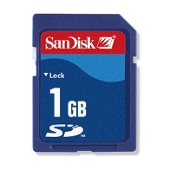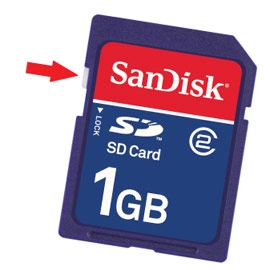Secure Digital (SD) memory card
Contents
Contents
Overview
A Secure Digital (SD) memory card is a digital memory card that utilizes the non-volatile memory card format developed by the SD Card Association (SDA) for use in portable devices. The SD technology is used by more than 400 brands across dozens of product categories and more than 8,000 models. Modern data-recording CPAP machines often utilize an SD card to store data. CPAP SD memory cards can be removed from the CPAP machine and CPAP data (such as AHI, mask leak, compliance hours, and CPAP pressure settings) can be read and analysed using CPAP software for the PC.
SD comprises several families of cards: the original, Standard-Capacity (SDSC) card, a High-Capacity (SDHC) card family, an eXtended-Capacity (SDXC) card family, and the SDIO family with input/output functions rather than just data storage.
SD also comprises three different form factors: the original size, the "mini" size, and the "micro" size (see illustration). Electrically passive adaptors allow the use of a smaller card in a host device built to hold a larger card. There are many combinations of form factors and device families.
Host devices that comply with newer versions of the specification provide backward compatibility and accept older SD cards, but older host devices do not recognize newer cards. The SDA uses several trademarked logos to enforce compliance with its specifications and assure users of compatibility.
Card capacity
The most common SD card sizes for xPAP machines is 2GB to 32GB SDHC cards, formatted as FAT32
Cards larger than 32GB are SDXC or SDUC and formatted as exFAT which may not be compatible with many machines.
Card Locking Feature
On most SD memory cards, there is a sliding "lock" on the left side of the card. When moved downward to the "lock" position, data can be read from the card, but new data cannot be written to the card. When moved up to the "unlocked" position, data can be either read or written to the card. When used in conjunction with a data-recording CPAP machine, it is important to make certain that the SD card remains in the "unlocked" position so the machine can record patient data to the memory card.
Using an SD Card With OSCAR
To have detailed data on flow rate, pressure, events and other data recorded by xPAP machines, a SD card must be in the SD card slot during use. Failure to insert the SD card before therapy begins will result in no detailed data being recorded. To use OSCAR to analyze your data you need an SD card in the xPAP and a computer capable of running OSCAR. While many DMEs include an SD card when they set up an xPAP, some DMEs no longer include an SD card.
To determine whether your xPAP has an SD card, find the location of the SD slot in the user or Clinical Manualfor your machine. If there is already a card in the slot, your machine is already recording data to the card. If there is no SD card in the slot, you need to purchase a standard SD card and insert it into the slot. Standard SD cards are found in many stores and they usually cost less than $10. The standard SD card that comes with most machines is 2-GB. Commonly available sizes are 8, 16 or 32 GB. Using a larger card will not store more OSCAR data. Do not exceed 32 GB or the machine may not be able to use the card.
Note: Some older xPAPs cannot use the newer, and more common SDHC and SDXC data cards. If your machine requires an SD card that is not an SDHC/SDXC, it will give you an error message when you insert the card. If you need to purchase a basic SD card, you may need to look on-line or at a store that specializes in camera equipment or electronics rather than a store like Walmart or Target.
Prevent System Files From Being Written to SD Card
You will need to have the card in the Write Enabled (unlocked) condition while it is in the S9 and Write Protected (locked) prior to inserting it into your computer. Also, some of the newer low cost card readers do not have the micro switch installed in the unit. This means that even if you have it write-protected, it may not stop it from having the system files written by the PC.
To be safe you may wish to download and use the following script. It will turn off(or back on) this feature on your PC. Prevent SysVol Info Write

Donate to Apnea Board

